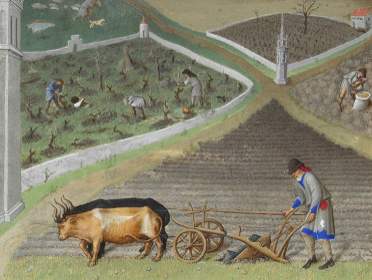Difference between Feudalism and Manorialism

Feudalism and manorialism (or manorial system) were the key characteristics of the Middle Ages. Both terms refer to a landholding system in medieval Europe and were closely related, however, they were two distinct systems with several important differences.
The most important difference between feudalism and manorialism was their concept. The first was a political and military institution, while the manorial system was an economic organization of a feudal estate. It lacked the military character of feudalism that based on a system of fiefs according to which the land was held by a vassal from his lord in return for political allegiance and military service.
Manorial system was based on self-sufficient manorial estates, and regulated production and land tenancy of the serfs. They held land from their lord who could have been a king, duke, bishop, abbot or a lesser noble. In return, they paid dues in kind, service or money. Unlike fief holders, the serfs were not obliged to provide military assistance to their lord. On the contrary, it was the lord who owed military protection to his serfs.
Both feudalism and manorialism determined the social status of an individual that eventually became hereditary. But unlike fiefs which could have been initially taken away, the lord could not withdraw the land from his serfs. The peasants were, however, tied to the land and could not move away from their land nor choose their lord. Fief holders could grant a part of their fief together with the serfs to someone who then became their vassal and the new lord to the serfs on the received fief.




